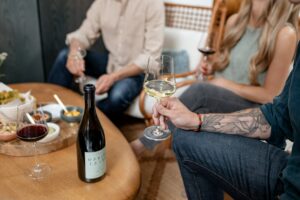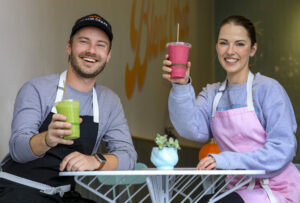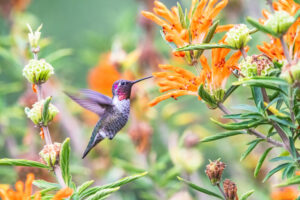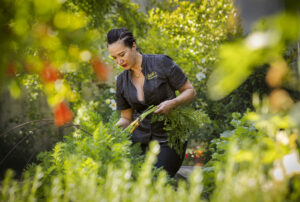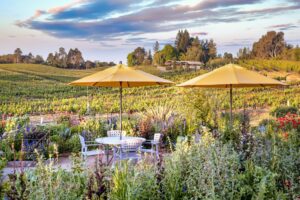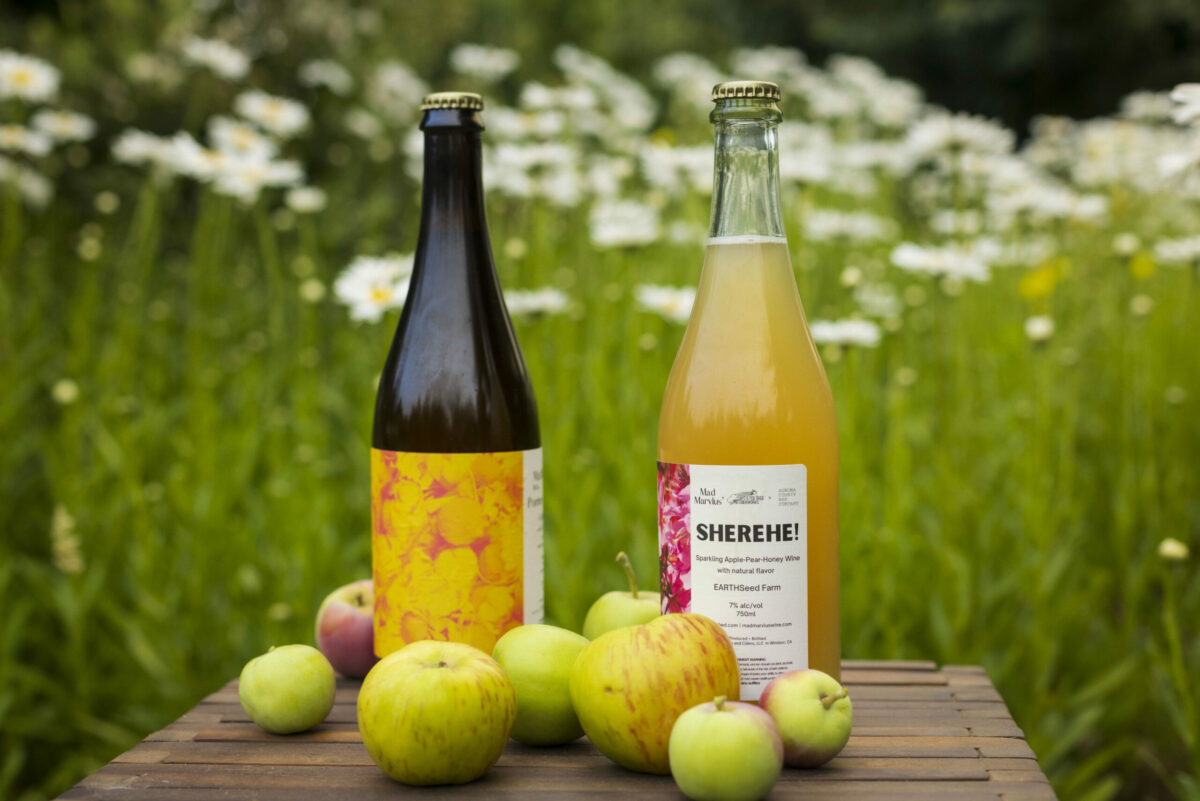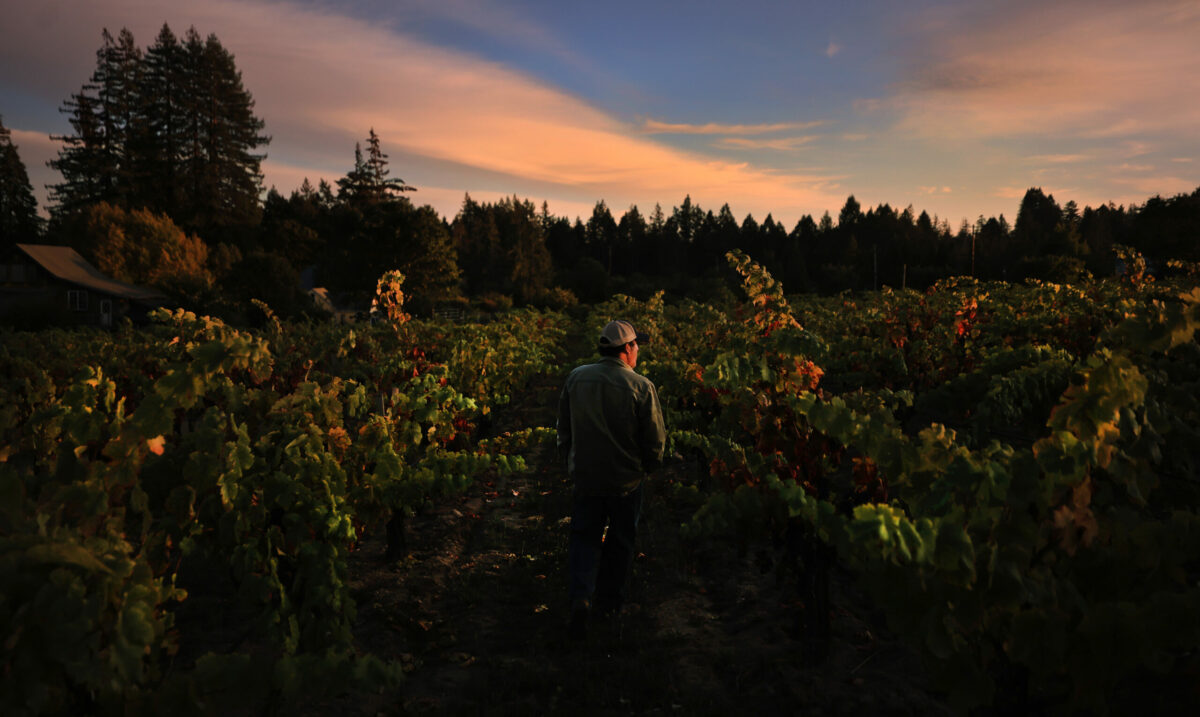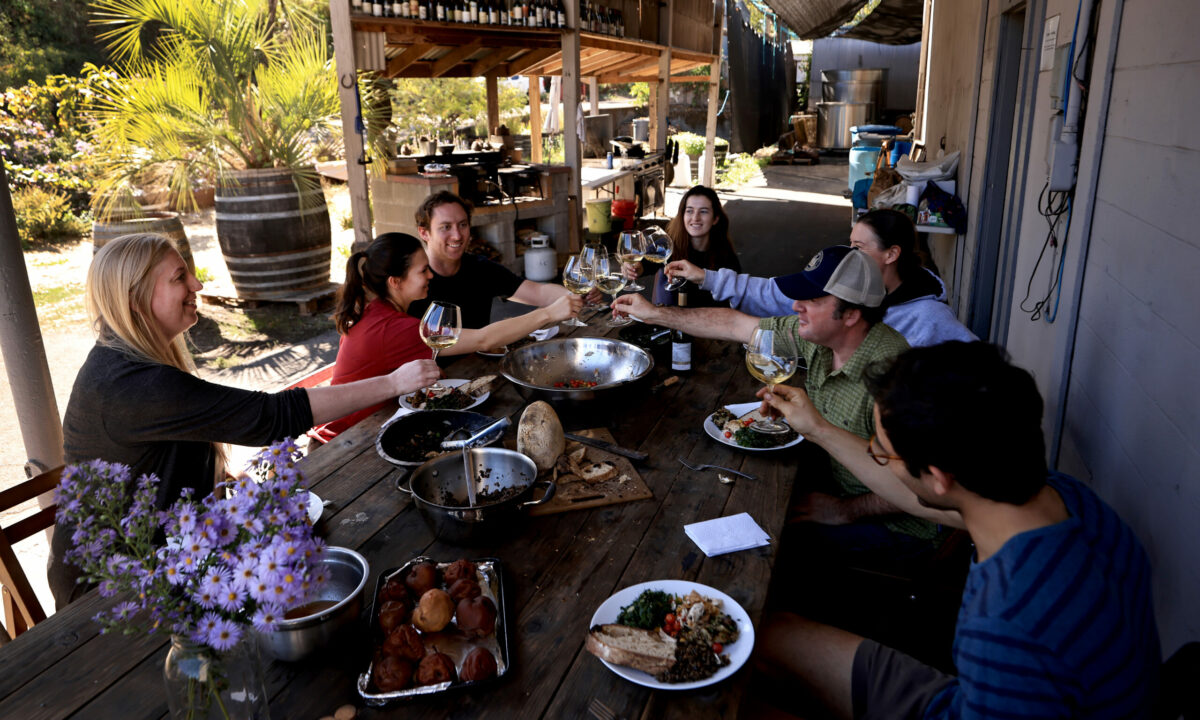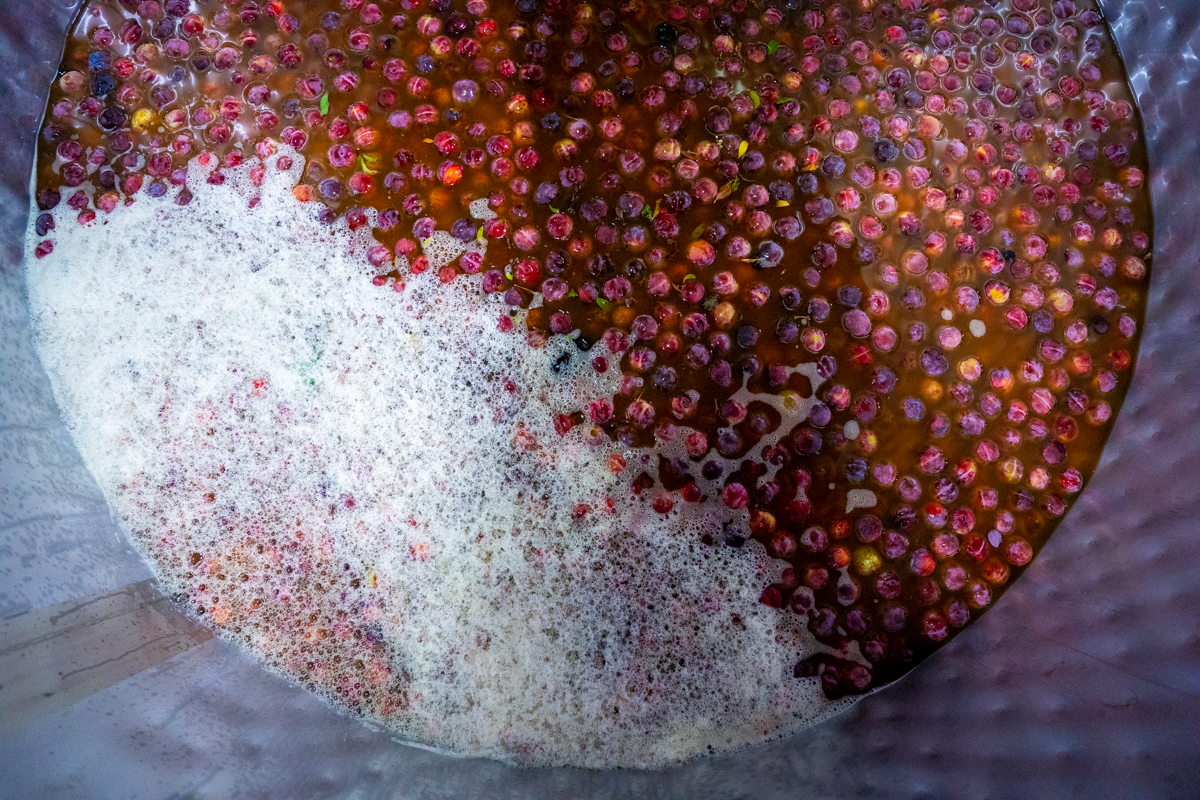Winemaker Marreya Bailey has an affectionate name for the otherworldly libations she concocts with apples, wild hybrid grapes, pears, quince and honey, often infused with botanicals such as jasmine and lemon verbena.
“I call them my creatures,” she says with a cheeky smile. “They all have their own personalities and they’re ever-evolving and transforming. They literally are my children.”
Walking through lush apple and pear orchards at EARTHseed Farm in Sebastopol, Bailey is sizing up fruit for the upcoming harvest. The wooden sign at the entrance—“Welcome Black to the Land”—sums up everything you need to know about where she stands.
The first Afro-Indigenous farm in Sonoma County is where Bailey harvests Asian pears and apples, tapping into her Ethiopian roots to make a drink inspired by tej , the popular Ethiopian honey wine. The result is Sherehe! (Swahili for “celebration”), a sparkling wine co-fermented with Asian pears, apples, and raw wildflower honey, and infused with foraged pink jasmine flowers.
On a hot day, Sherehe might be the perfect picnic wine, or cider, or something entirely all its own, unlike any elixir most people have ever tasted.
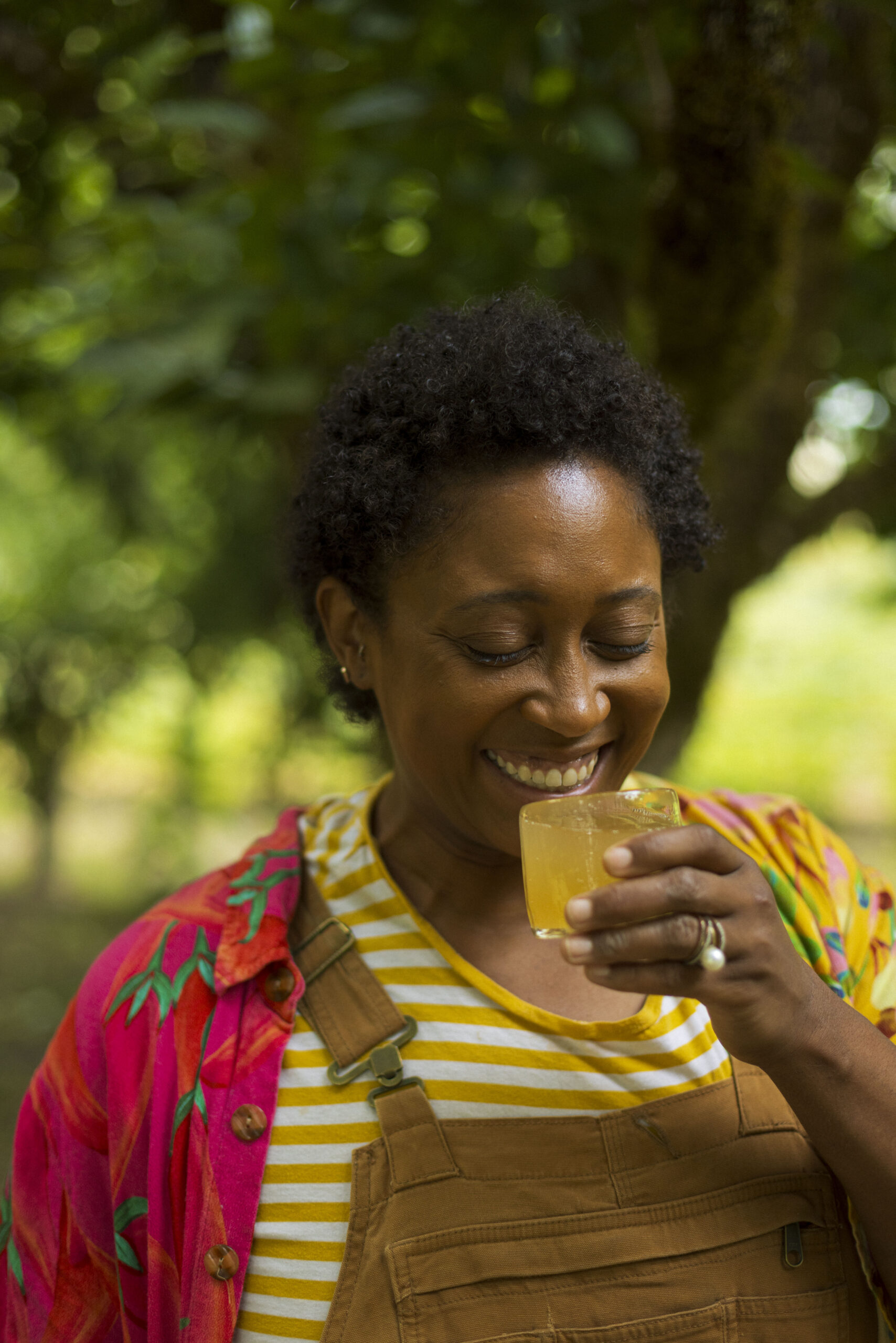
Marreya Bailey of Mad Marvlus uses apples, grapes, and other botanicals to make fermented alcoholic beverages that are neither strictly wine nor cider, but the best of both. (Conor Hagen)
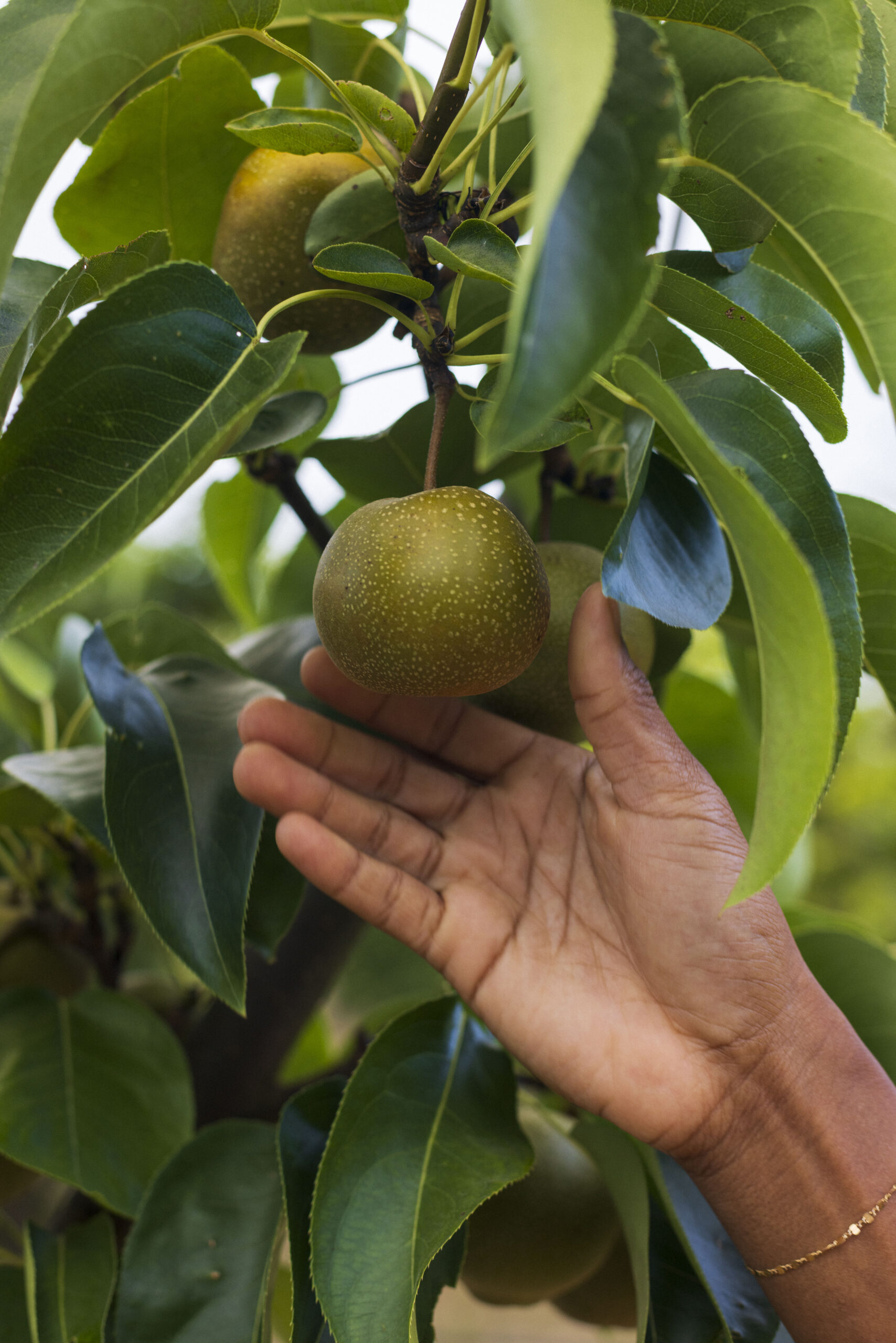
Bailey is part of a renegade band of local co-fermenters pushing the boundaries of what it means to make wine and cider today. Luther Burbank would be proud of this new batch of rule breakers, who refuse to see Sonoma County as a sprawling monoculture but instead a place where the bounty of the county thrives and everything is welcome in the fermentation bin.
At Eye Cyder, Eric Sussman prizes fruits with a similar ripening window, whether it’s wild blackberries with Gravenstein apples or quince with pineapple guava. “The cool thing about these seasonal co-ferments is they’re actually happening at the same time and we’re harvesting them together,” he says. Other times, he’ll mix seasons, like fall and spring, spiking apple juice with green redwood tips.
Likewise, Matt Niess at North American Press loves co-fermenting wild California grapes with Gravenstein apples for his Wildcard cider. Aaron Brown and Colin Blackshear at Bardos Cider coaxed their Saint Cabora into being by pouring aged cider over leftover grape pomace. At Tilted Shed, husband-and-wife team Scott Heath and Ellen Cavalli blend apples with elderberries and blackberries. And Chenoa Ashton-Lewis and Will Basanta at Ashanta are big fans of co-fermenting elderberries with French Colombard grapes or taking abandoned Oakland feijoa (pineapple guava) for a trip to the country and marrying them with Occidental apples.
With harvest beckoning, Bailey strolls the 14-acre, solar-powered EARTHseed Farm with manager Brent Walker, who points out that many of the 4,000 fruit trees are unlabeled varieties, often decoded by taste.
The last time she harvested here, Bailey walked from tree to tree, biting into pear after pear, looking for the right balance of tannins, aromatics, and flavors. With 30 varieties of Asian pears to choose from, she’s thinking about making a sparkling pear cider (aka perry) this year.
Sometimes she goes by feeling as much as taste: “It’s a matter of getting in touch with the ancestors, and imagining how things were before colonization,” she says.
Walker lights up when he hears this. “Being a farmer, it makes me so happy to hear what people are doing with the fruit and the connection they have to it,” he says.
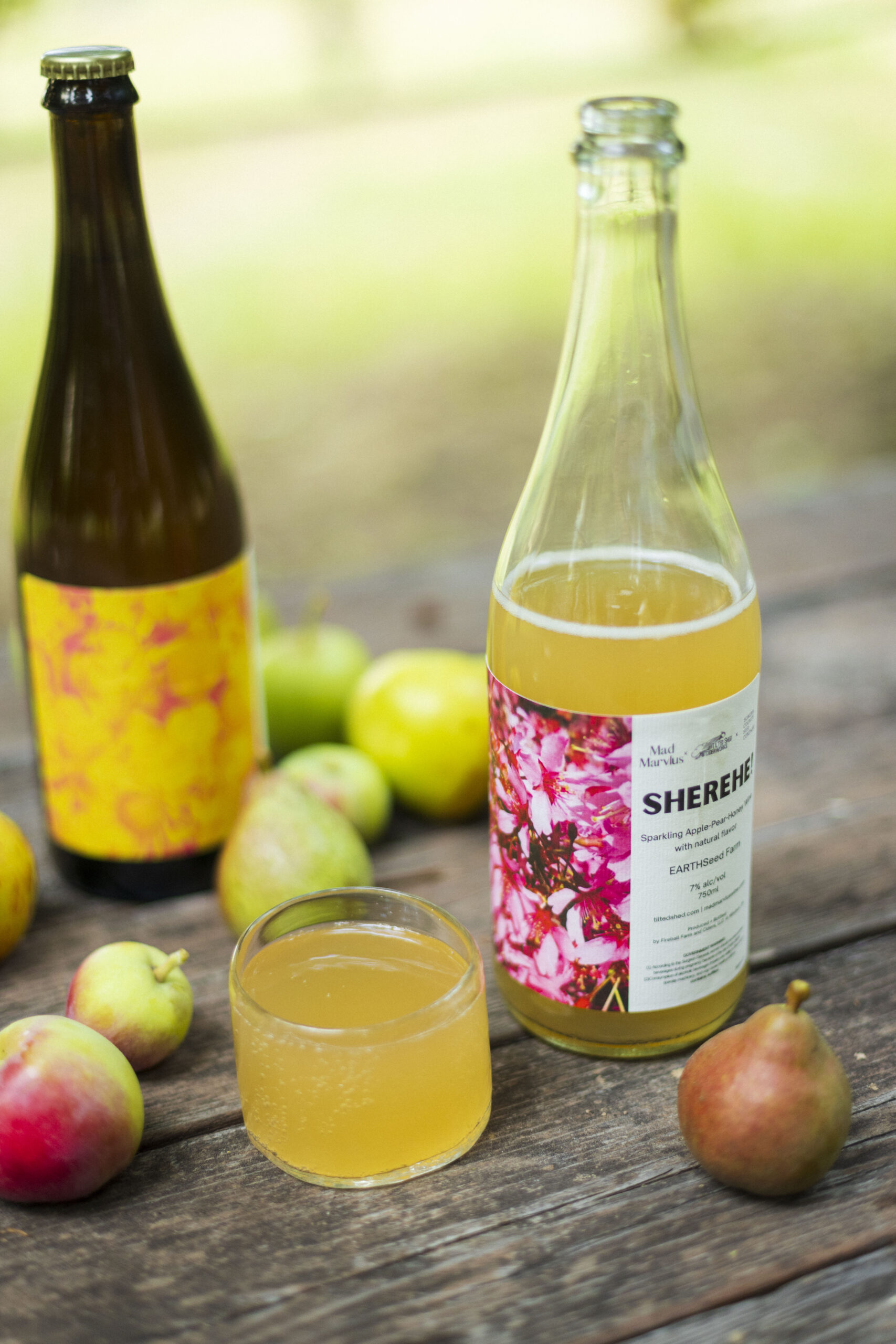
Marreya Bailey’s Sherehe! co-ferment was insipired by tej, the fermented honey wine from Ethiopia. It includes Asian pears, apples, honey, and jasmine from EARTHSeed Farm in Sebastopol. (Conor Hagen)
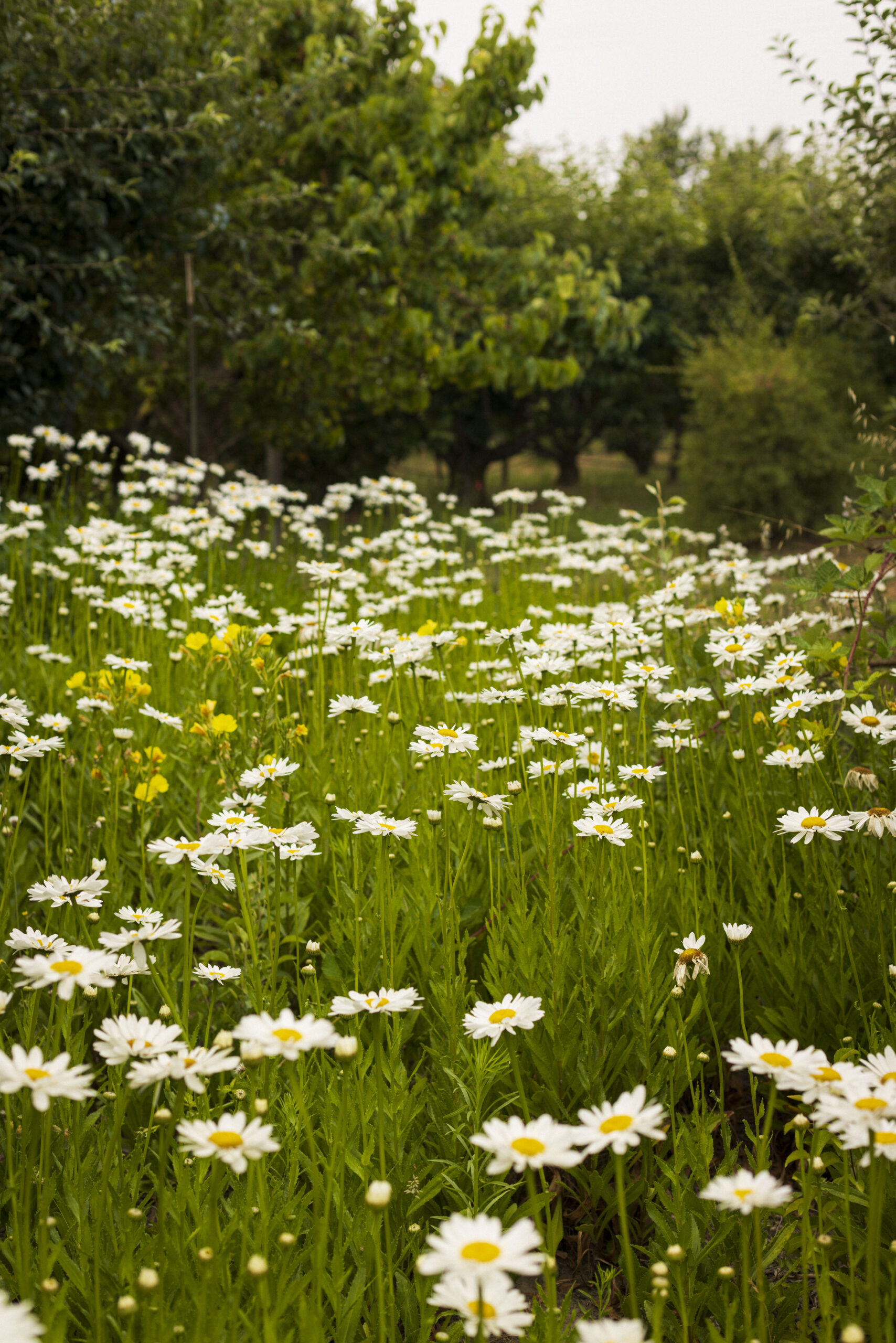
Everything Bailey makes is organic, naturally fermented, unfined, and unfiltered. She only adds a minimal amount of sulfur if absolutely needed. Equal parts science and art, co-fermenting appeals to her love of puzzles and chemistry experiments.
“I love challenges—and that’s the greatest part of working with underrepresented fruit like this,” she says.
It’s a far cry from her past life, toiling at a desk for over a decade in corporate human resources departments. Realizing her soul wasn’t satisfied, she moonlighted on weekends, working as a wine seller and cheesemonger. Born in Wisconsin, she grew up in Minnesota and lived in Georgia, North Dakota, and Ohio before moving out to California in 2020 to work as a harvest intern with natural wine guru Martha Stoumen.
Armed with a bachelor’s degree in forensic anthropology and a master’s degree in psychology, she was now a cellar rat, working long hours to breathe life into other people’s wines. But she took notes and learned every step of the process.
Hooked after the Sonoma County harvest with Stoumen, she lit out for Vermont to work a later harvest at ZAFA Wines. In 2021, she enrolled in the Two Eighty Project’s Apprenticeship Program, a six-month endeavor that targets underrepresented communities often excluded from the wine industry, partnering with winemaker Steve Matthiasson and UC Davis at Alemany Farm in San Francisco.
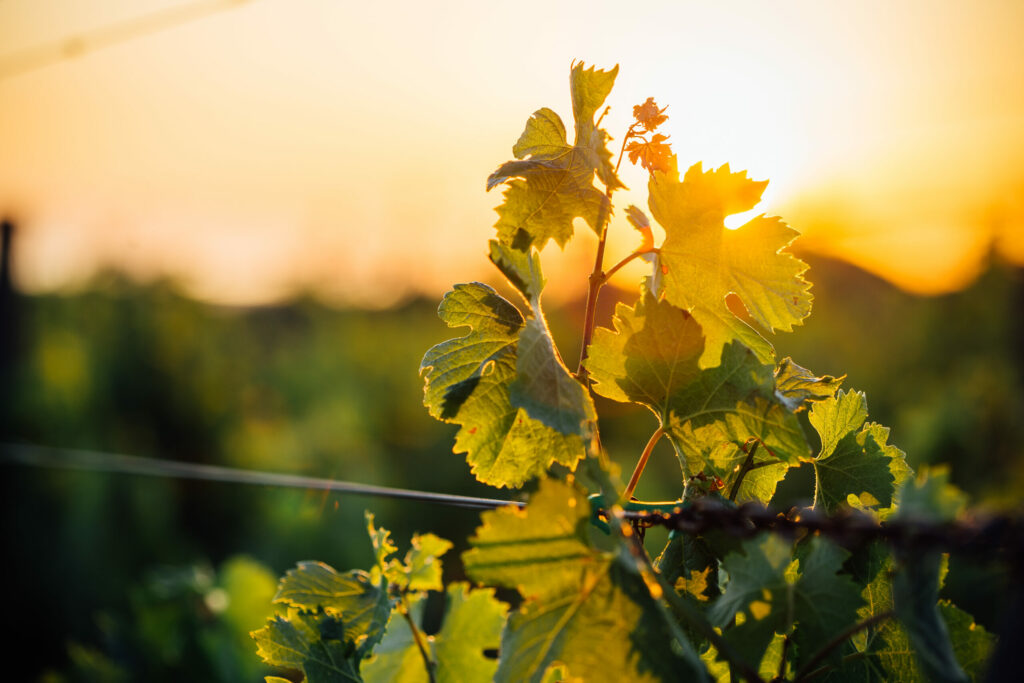
Wine- and cider-makers exploring co-fermented beverages often like to combine fruits and botanicals that ripen in the same season.
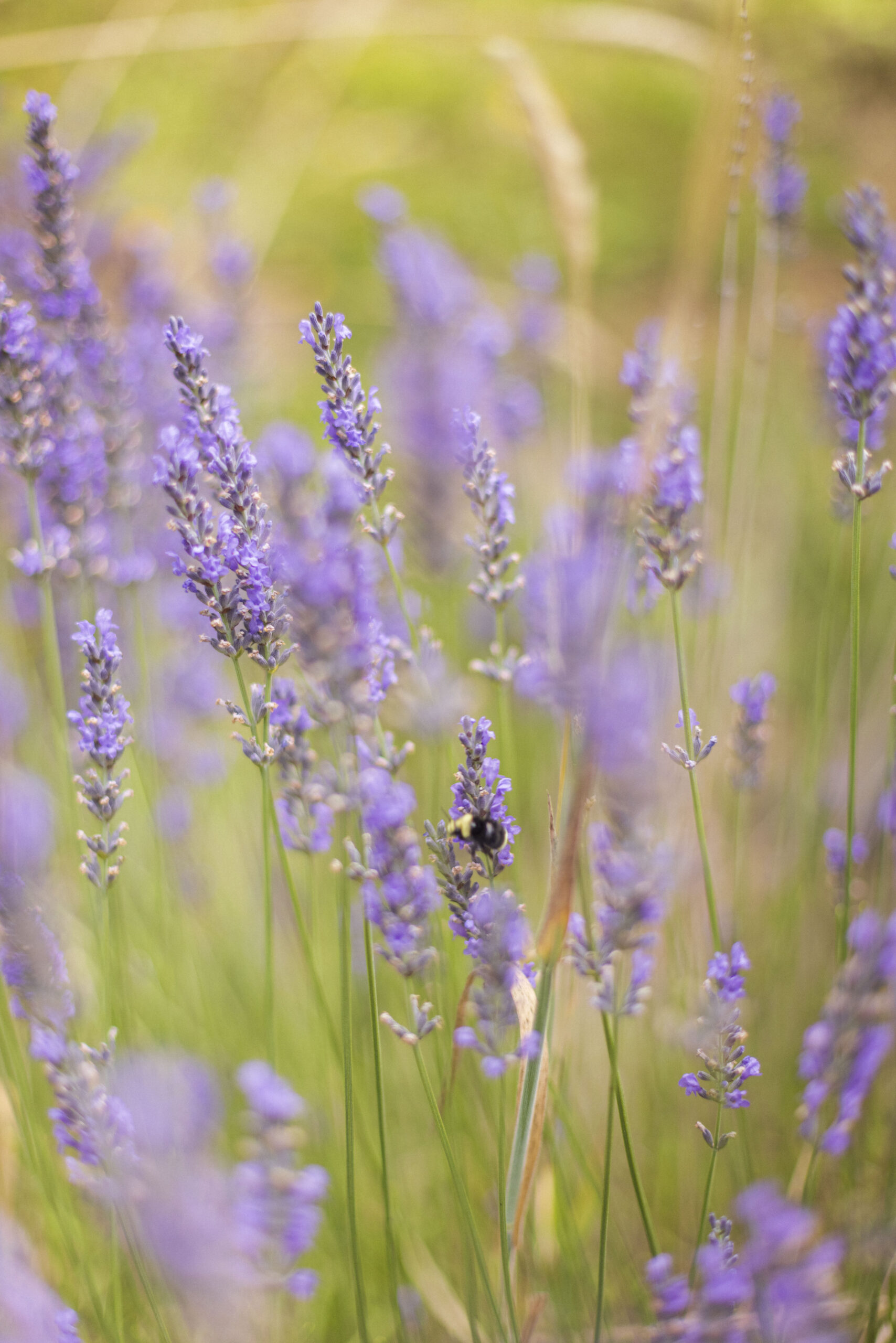
After paying her dues as an intern, Bailey drew up a business plan and pitch deck. Starting with $25,000 from investors, she founded Mad Marvlus, combining her “Mad” scientist tendencies with the nickname “Marvlus” that an encouraging friend gave her years ago.
“I tell people when they first meet me, ‘I’m a scientific mind with an artistic heart.’ This is art for me, and I just love sharing an extension of myself. Mad Marvlus is an extension of me. It’s literally my alter-ego.”
It’s a story she’s proud to tell. Hoping to bring diversity in taste and race to the Bay Area winemaking scene, she’s done her research. At EARTHseed, when she says, “I feel like I can talk to my ancestors here,” she’s conscious of standing on the shoulders of early BIPOC cider makers, like Jupiter Evans, an enslaved person owned by Thomas Jefferson, who pioneered cider making in America in the 1700s. She also knows less than 1 percent of the more than 11,000 wineries in the U.S. are Black-owned or have a Black winemaker.
“I grew up in the Midwest, so I’m used to being the only Black person in the classroom,” she says. “I’m used to it, and I can handle that, but it shouldn’t be like that. We need to diversify this area.”
When it comes to raising debt-free capital, “We know for women in this industry it’s already challenging,” she says. “It’s even more challenging for women who look like me.”
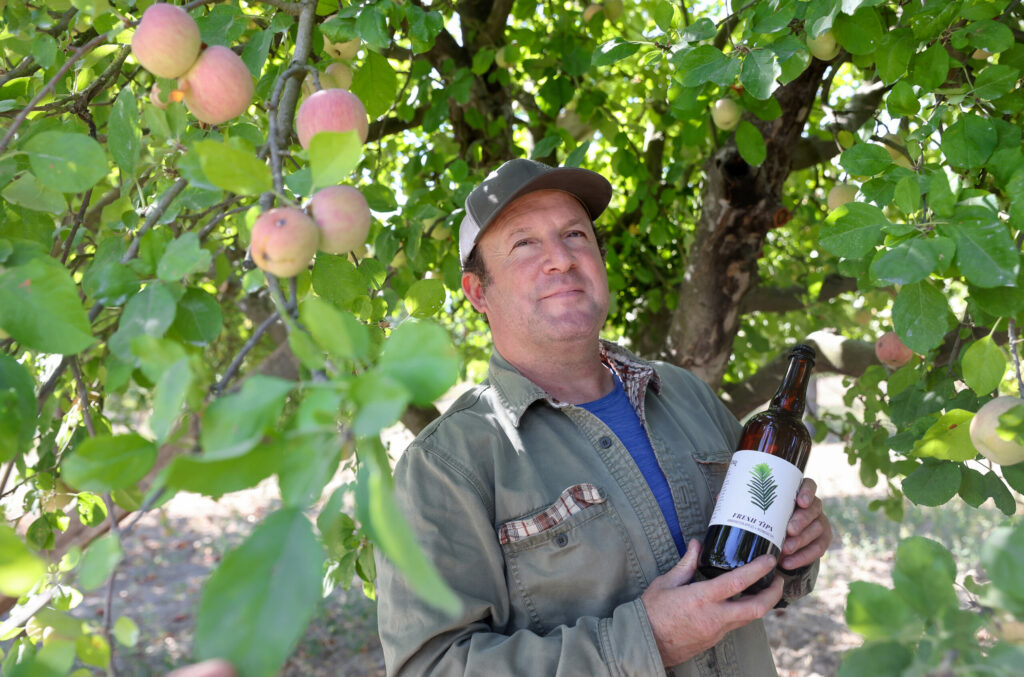
Eric Sussman is the wine grower and proprietor of Radio-Coteau, which produces cider under the Eye Cyder label. His coferments include ingredients like apples, grapes, plums, citrus peel, and fir tips. (Christopher Chung)
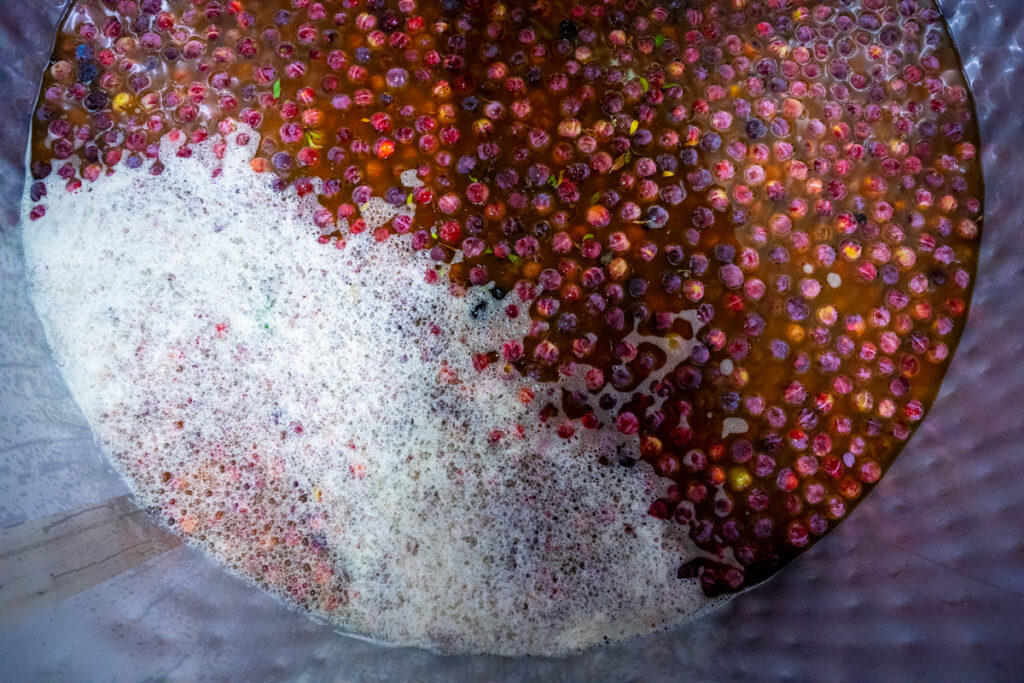
After walking the land, Bailey finds a seat in the shade and uncorks a few of her delectable creatures. There’s Pomme Quincy, a co-ferment with two varieties of quince from Filoli Farms in San Mateo and an assortment of apples—Arkansas Black, Black Twig, Sierra Beauty, Rome, Wickson Crab—from Mendocino. Because she likes to mix things up, she infused it with chamomile and lemon verbena, literally “tea-bagging it” in the barrel. Named for her grandmother, Janet D Lyte is a “new age rosé” with Newtown Pippin and Rhode Island Greening apple juice rehydrating once-pressed grapes. And there’s the apple-pear-honey sparkling Sherehe!, which contains only 7 percent alcohol.
As Bailey pours and tells stories, her love of wine is infectious. The phrase “bone-ass dry” is her favorite way to describe her co-fermentation style, something she will repeat a handful of times—almost as many times as she says “porch pounder” or “glou glou” to describe relatively low-alcoholic beverages that go down easy like lemonade.
Part of the appeal is working with more climate-friendly fruit that was here long before Europeans introduced Chardonnay and Pinot Noir. “That’s not where the future is going,” she says. “We’re going through a revival right now. We need to come back to basics and look at, how did the original people, who lived here before it was colonized, make wine or their own version of fermented beverages? They were working off what the land was providing them.”
Tipped off by a friend who knew the landowner’s daughter, Bailey stumbled on a feral, dry-farmed field blend outside Sacramento, mixed with wild, red hybrid grapes crossed with native Vitis californica grapes and abandoned Alicante Bouschet grapes. Surrounded by blackberry brambles, many of the vines were climbing trees like kudzu. Picking the grapes for free, she used them in her Mad Maxine red blend and then rehydrated the skins in her Janet D Lyte.
Last year, she co-fermented pineapple guava with rehydrated Ribolla Gialla grapeskins, adding in niitaka Asian pears, quince, and apples. It was a collaboration with Colombian winemaker Sabrina Tamayo, a fellow Two Eighty Project graduate who owns Ruby Blanca Wines.
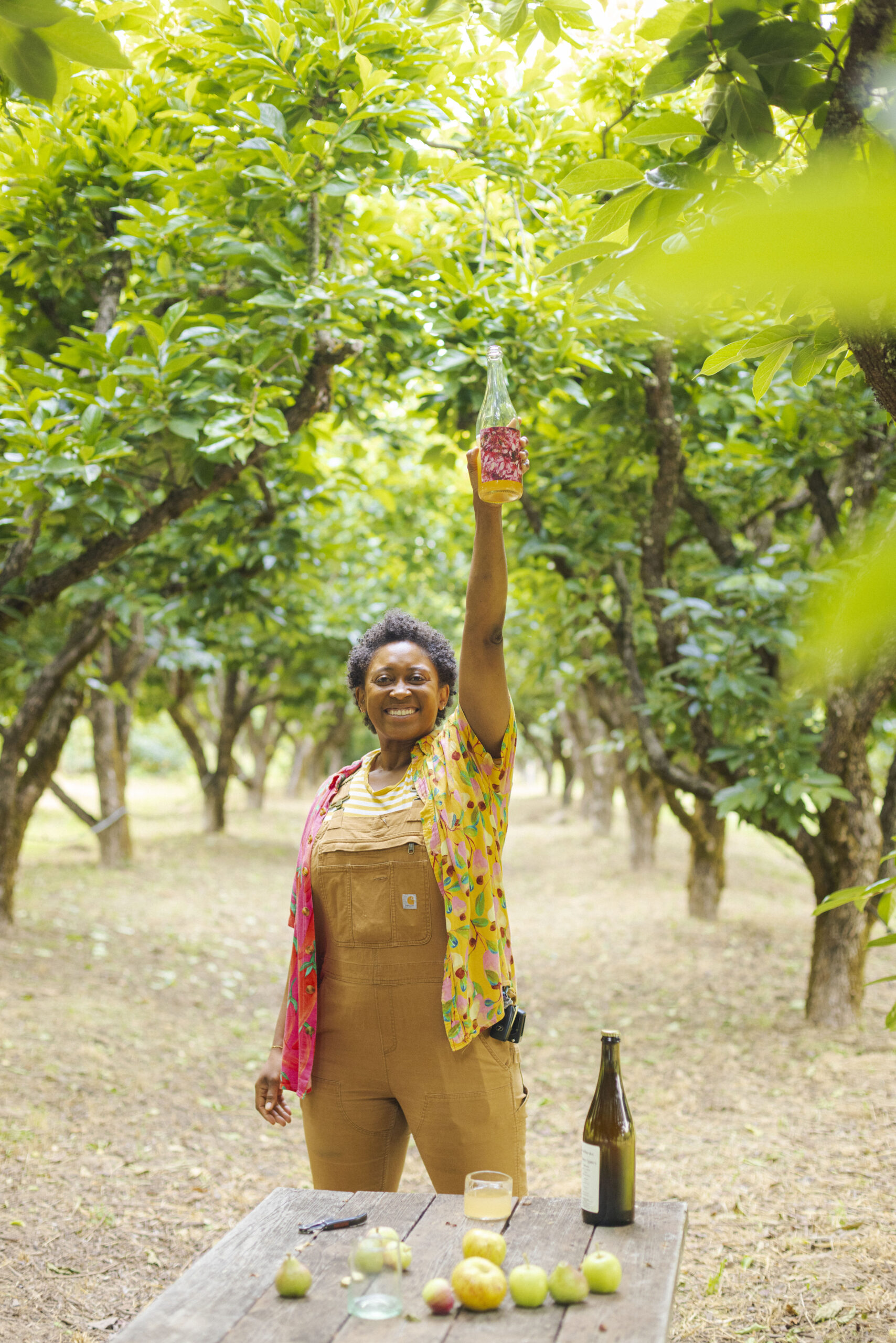
Always looking for more botanicals and herbs to infuse, Bailey recently found a source for hibiscus flowers. She’s even toying with an infusion of butterfly pea flowers, which impart no flavor, but turn any liquid a magical blue. She’s also planning to release a non-alcoholic Muscat wine soon.
“Crazy, to me, would be creating something non-alcoholic and you’re blending more than co-fermenting,” she says. “You’re blending different fruits like watermelon, pineapple guava, and rare apples like Kingston Blacks.”
As she’s leaving EARTHSeed, Bailey runs across a mulberry tree that looks like it’s been grafted with other berries. She plucks a mulberry and tastes it. Not quite ripe, it hints at how sweet it will become. You can almost see the wheels turning in her head as she pulls out her phone and takes a photo for future reference.
“Berries are probably next on my list of things to work with,” she says.
In other words, it won’t be long until they’re swimming around in a tank with other fruits, a welcome addition to her evergrowing family of “creatures.”
More from the cutting edge of co-fermentation
Along with eclectic palates and little regard for rules, the most common thread Sonoma County co-fermenters share is a low- to no-intervention philosophy, which often means wild fermentation, no filtering or fining, and working with organic and biodynamic fruit that is often dry-farmed and occasionally foraged.
“The Burgundians have this saying, ‘The hardest thing to do is nothing at all,’” says Eye Cyder owner Eric Sussman. “That happens when you understand how these fermentations happen and how the fruit reacts. With the apples, it’s much less analytical and more sensorial—smelling and tasting to figure out timing.”
Here’s a look at a few Sonoma County co-fermenters who will be sensing their way through this year’s harvest.
Eye Cyder
Owner Eric Sussman, who also owns Radio-Coteau winery, freely admits the winery is the cash cow and the cidery is the passion project. But follow the passion and you’ll find a mouthwatering array of farm-to-lab creations.
The Oro Blanco blends citrus peels with hops and apples. The Skins and Stones coferment is made with Satsuma plums and Gravenstein apples. But quite possibly the most simple and unusual is Fresh Tips, a cider infused with green redwood tips and then barrel aged.
North American Press
Consumed by a passion for indigenous grapes, Matt Niess makes his Wildcard co-ferment with wild native grapes picked from around California and organic Sonoma County Gravensteins.
And remember the old adage, “It takes a lot of beer to make good wine”? Well, maybe it applies to co-ferments as well. In an Instagram post, Niess points out he had to borrow extra bench cappers from Moonlight Brewing while bottling his ’22 Wildcard vintage.
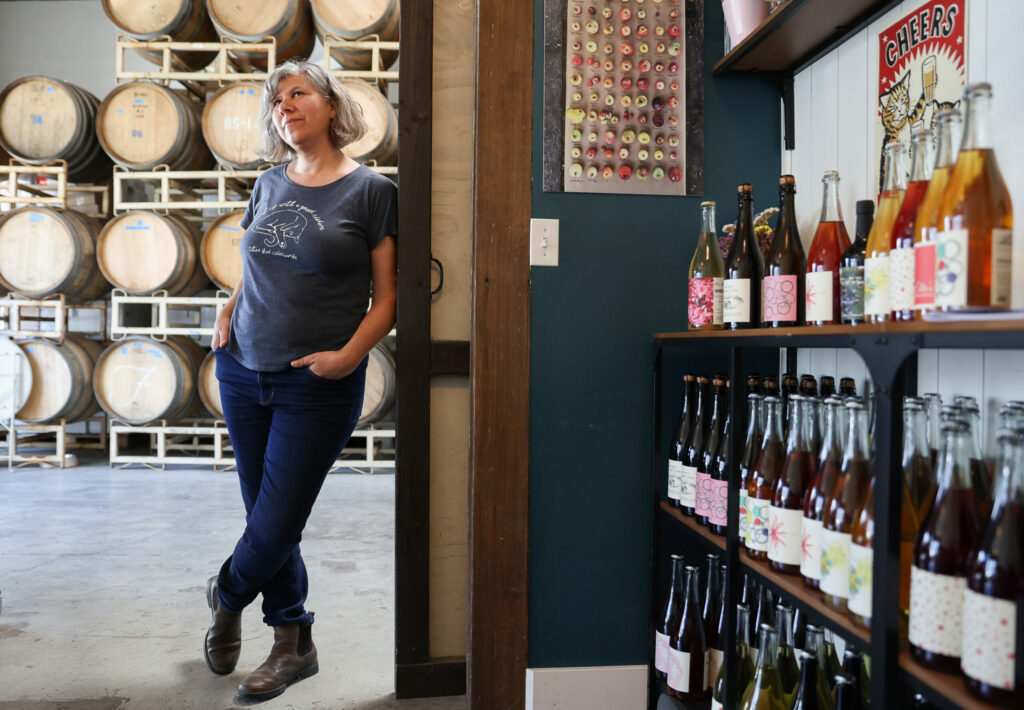
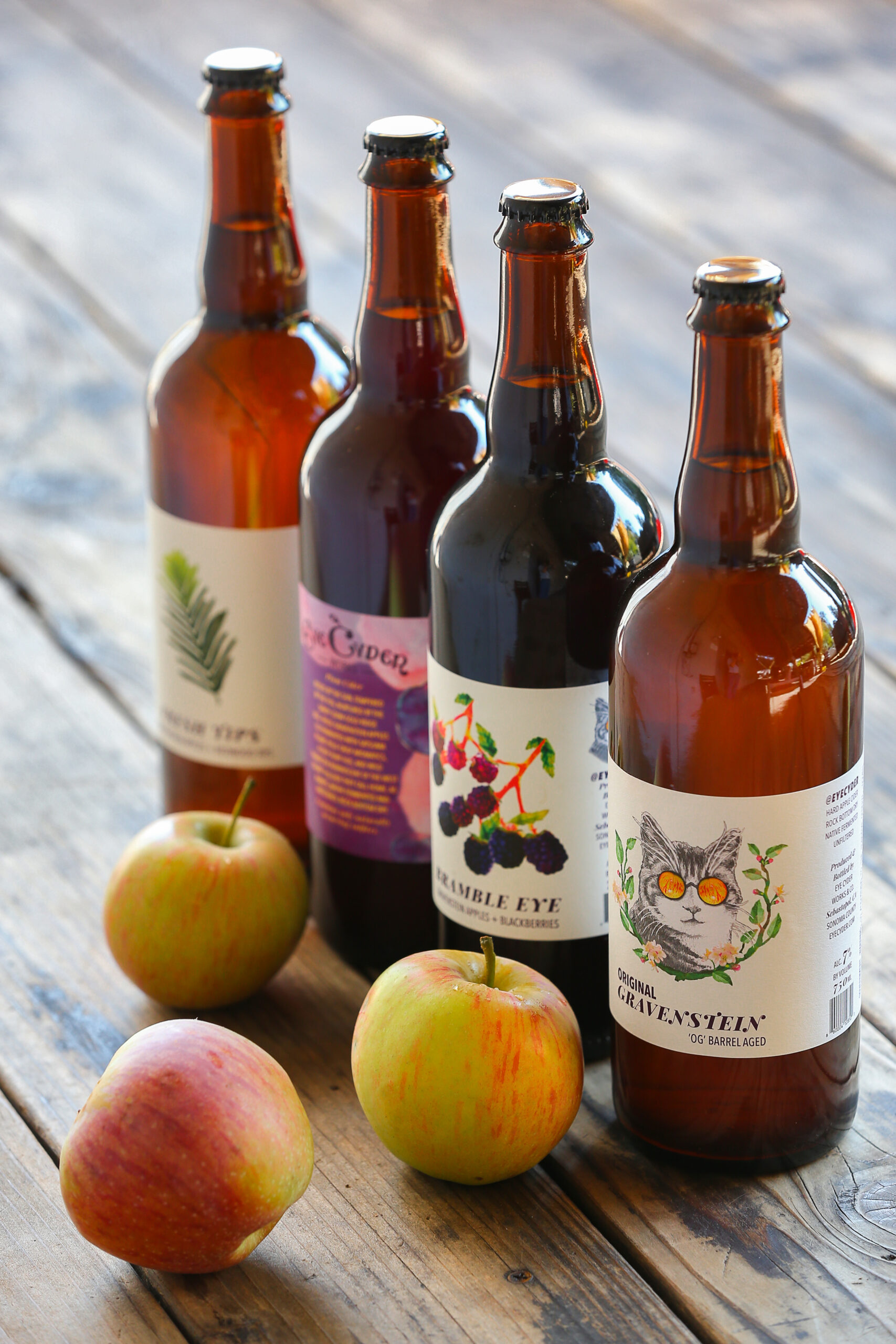
Tilted Shed Ciderworks
Owners Scott Heath and Ellen Cavalli like to call their coferments “foodshed ferments.” It goes back to the classic idea that “things that grow together go together.”
Their Loves Labor cider may be the best example, combining wild blackberries handpicked at their Sebastopol farm, with native elderberries foraged near the Russian River and organic dry-farmed Gravenstein apples from Vulture Hill Orchard.
7761 Bell Rd., Windsor. tiltedshed.com
Ashanta
Filmmakers Chenoa Ashton-Lewis and Will Basanta got a chance to experiment with winemaking in 2019 when they salvaged what was left of Ashton-Lewis’s grandparents’ Glen Ellen vineyard, which had been partially burned in the Nuns fire.
Since then, they’ve sourced fruit all over the state, foraging elderberries in the San Gabriel Mountains, finding derelict feijoa in an Oakland park and picking abandoned vines near Dodger Stadium in L.A.
Whether it’s Gravensteins and Carignan (Sidra ’22) or elderberries and French Colombard (Brutal ’21), they’re throwing paint against the wall and seeing what sticks. So far, it’s working.
Bardos Cider
Two filmmakers (notice a trend here?) on a quest to rescue abandoned apple orchards and celebrate them with cider, Aaron Brown and Colin Blackshear are the team behind this experimental operation.
Paying homage to a healer known as “The Mexican Joan of Arc,” their Saint Cabora “apple and grape wine” breathes new life into recycled grape pomace from Bucklin Old Hill Ranch and Bedrock wineries.
Mad Marvlus
Starting small with less than 200 cases of Sherehe!, Pomme Quincy, Janet D Lyte, and the Mad Maxine red blend in 2021, Marreya Bailey is continuing to grow and experiment this harvest.
Look for new releases of a non-alcoholic Muscat and a coferment collaboration with Ribolla Gialla grapeskins rehydrated with the juice of niitaka Asian pears, quince, and apples. Bailey is also fundraising for a future winery/ cider co-op called the Bathing Collective.



